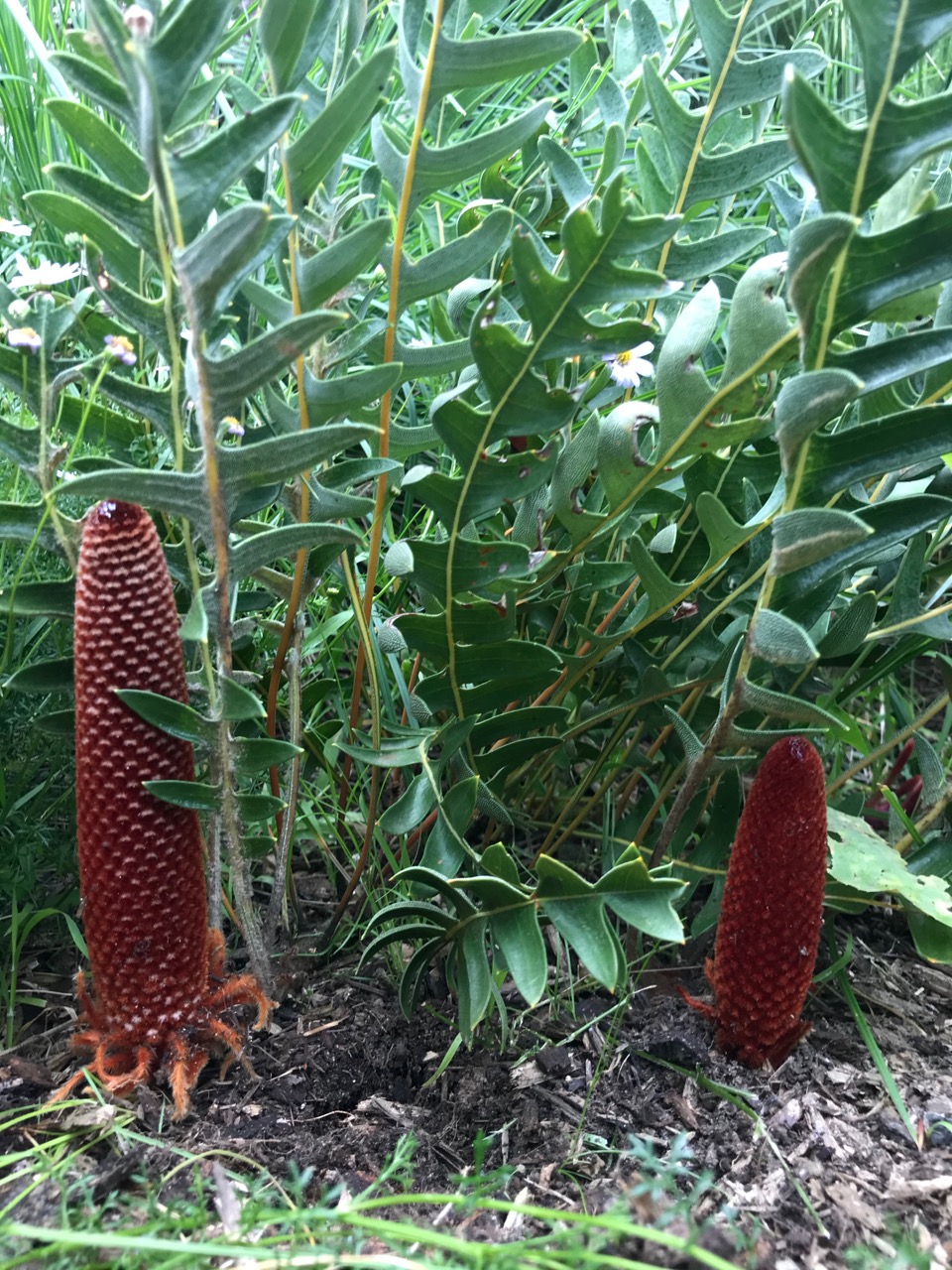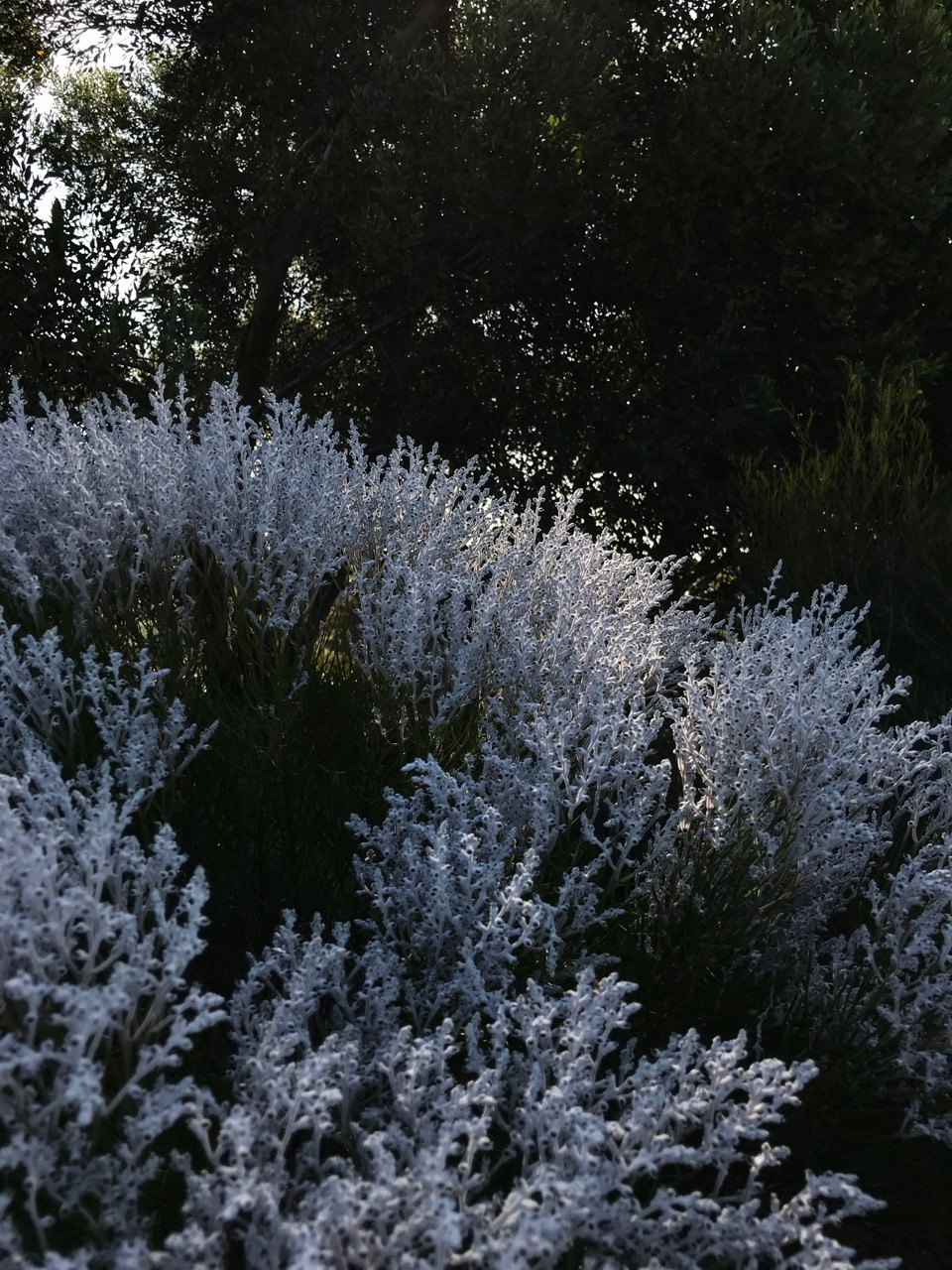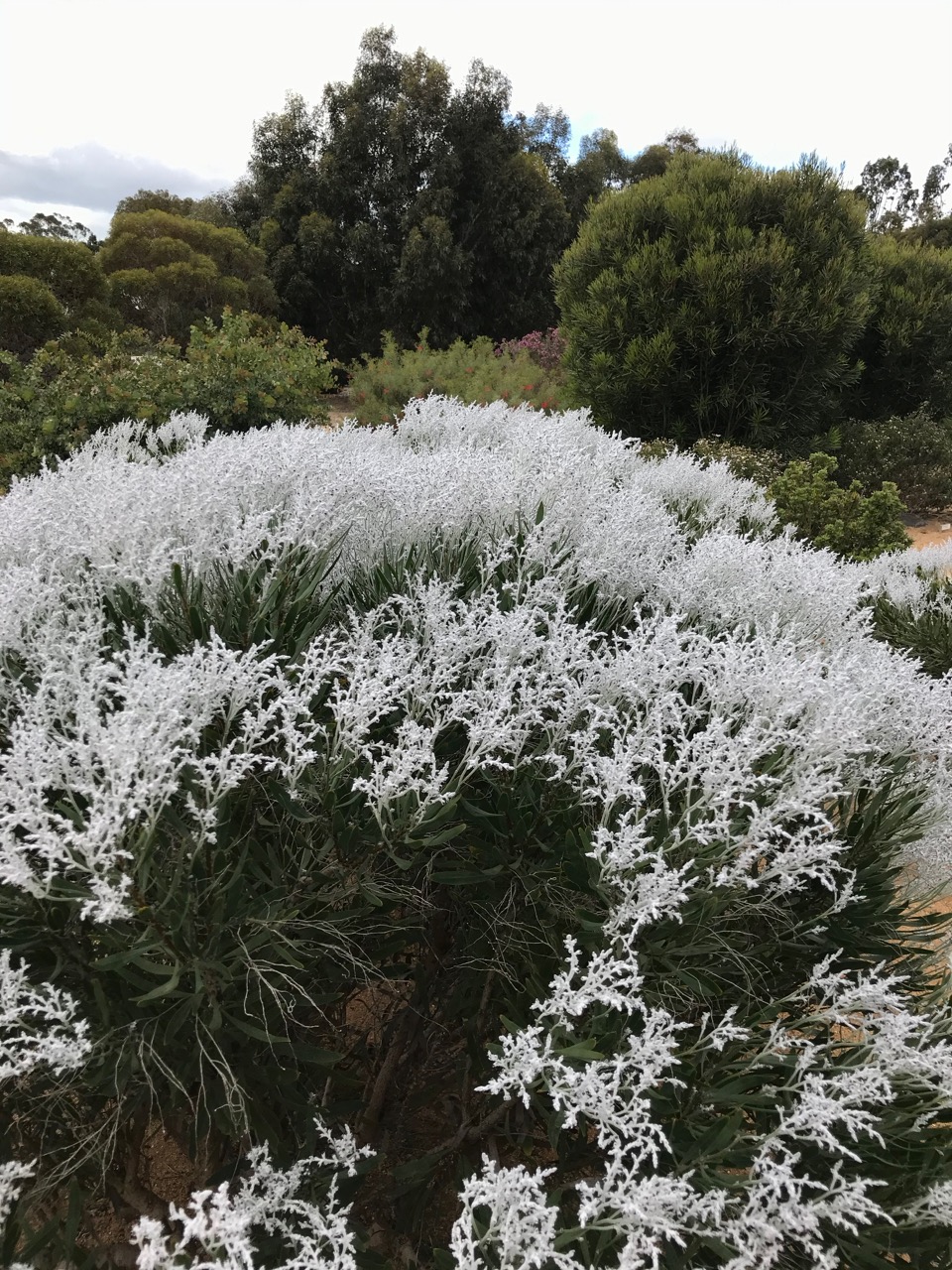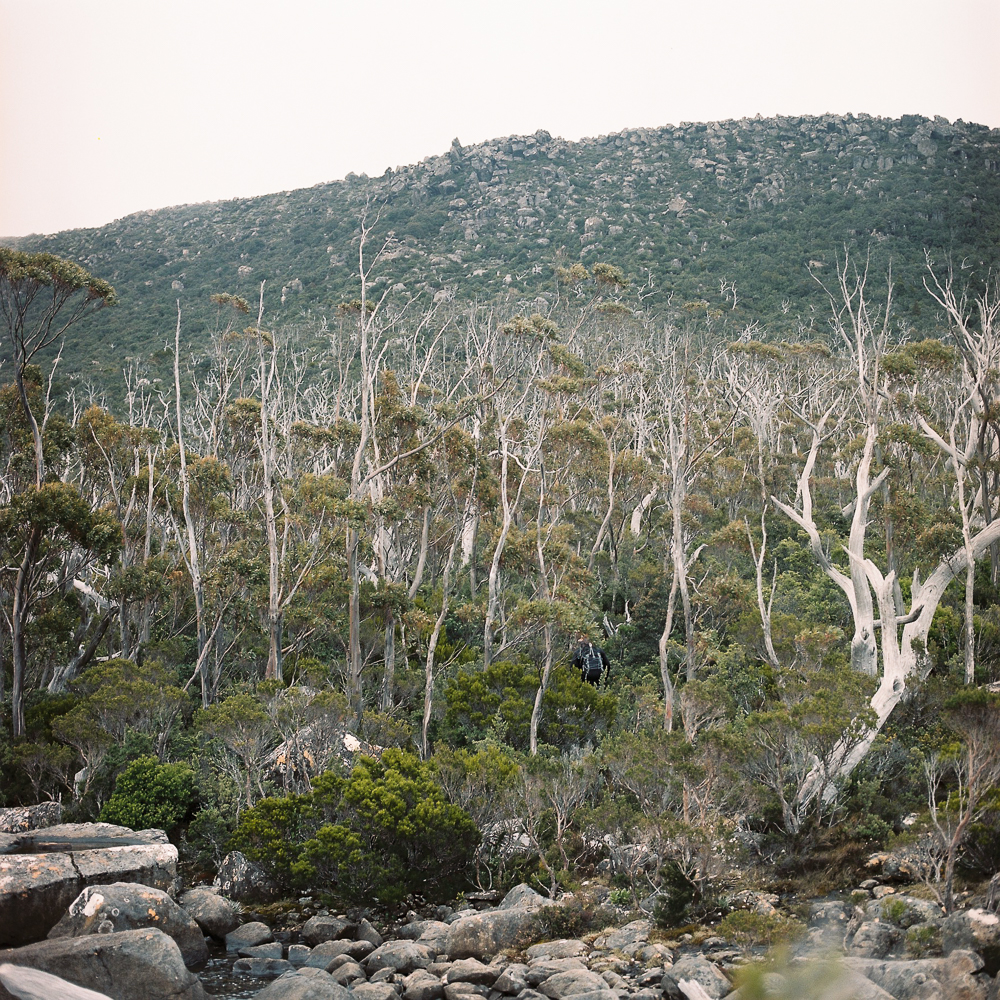
Above: Grevillea 'Loopy lou' contrasting with underplantings of Rhagodia spinescens (bottom), Correa alba (top left), existing Dianella 'Yellow stripe' (top right) and Dianella tasmanica (middle right).
Gardening is a strange practice. As gardeners, we spend so much time thinking ahead, researching and applying best-case knowledge and hard-won skills and experience.
We plan for the future, using what we have learned to make an educated guess about how our garden might turn out weeks, months, and years down the track.
And yet despite knowledge, skill, and experience, the results are entirely unpredictable. Some days gardening can be a wholly humbling, frustrating, annoying dance.
Other days, though, it can bring unexpected rewards. That Grevillea you swore was centimetres from death? It's back! The olive you inherited that looked like it would keel over at any moment? Hey, those are new leaves!
In many ways, gardening is representative of the weird lottery of life. We can use our past experience to gauge where we're at, and our hard-won experience to try to prepare for what's ahead as best we can, but in the end we can never really know what's going to happen.
The more we try, the more we fail, but in failing we learn, and that's the real game here.

Above: Banksia blechnifolia beginning to initiate flower spike formation.
The joy and the curse of gardening in rental houses
I've rented houses for twenty years now. Rickety, freezing houses in the shadow of kunanyi in South Hobart, Uni sharehouses in Sandy Bay, cracking terraces with expanding and contracting clay underfoot in Fitzroy North, Kensington and Carlton, a lonely three bedroom house in Reservoir, a small Brunswick East first floor apartment with no outdoor space.
Besides a couple of early mangled attempts when I was at Uni, abandoned when the pub beckoned and assignments called, I've planted at least some kind of garden in all of them. It's been a great ongoing lesson in how to adapt to growing plants in a range of challenging conditions (hello West Hobart, with your pademelons, a 45 degree slope of a backyard, and two hours of direct sunshine in winter).
It's been sad to leave these gardens behind each time, but one of the things it's taught me has been not to hold too tightly on to anything. Change will come, and sometimes that change will mean saying goodbye to something you've invested in for a year or two.
And that's OK, y'know? Part of the joy of it is the slow strength you build, knowing that wherever you'll be next, you'll be able to grow something.

Above: One of the mass planted Anigozanthos 'Everlasting gold' in flower, with Grevillea 'Carpet layer' providing a low cover underneath.
Building a garden in Northcote
This is just a little run-down of the garden Bec and I planted in our past rental place in Northcote, in Melbourne's inner northern suburbs. The area has a thin layer of sandy loam over a hard clay pan. It doesn't get a lot of rain each year - around 650mm, on average. It can be challenging for any plants that need good drainage, but also hard to keep enough moisture up to some plants through the warmer part of the year. The climate ranges from 0C in the middle of winter overnight to 45C in the height of summer.
When we moved in the garden was dominated by ivy (Hedera helix), which we spent a couple of days digging out from under the jasmine. Here's a photo with the recently removed ivy, showing existing jasmine, Poa spp, Dianella spp, a few Wahlenbergia stricta, and a rather sad Brachyscome.

Below it is the garden as we left it, minus a bunch of container plants on the porch, and the raised planter box you can see above.

Here's a quick rundown of the plants we added to the garden:
Feature plants:
- Correa alba
- Grevillea 'Loopy lou'
- Rhagodia spinescens
- Banksia blechnifolia
- Banksia 'Black magic'
- Adenanthos sericeus.
Supporting / filler plants:
- Poa poiformis
- Anigozanthos 'Everlasting gold' (mass planted)
- Bauera rubioides
- Lomandra 'Lime tuff'
- Dianella 'Tiny tas'
- Grevillea 'Carpet layer'.
Existing local plantings encouraged to return:
- Wahlenbergia stricta
- Einadia nutans.
Replacement hedge (at left):
- Metrosideros excelsa 'Mini xmas'.
These plants failed as a result of pest predation:
- Chrysocephalum apiculatum
- Arthropodium milleflorum
- Rhodanthe chlorocephala
- Pycnosorus globosus.

Above: Another look at Grevillea 'Loopy lou' and Correa alba contrasting nicely.
It turns out snails and slugs munched these plants as soon as they were planted out, so they weren't good selections for the environment.
By the time we left the garden was attracting many more butterflies, insects, skinks, and nectar-attracted birds, which was super satisfying.
If I had my time over again I would have given the Rhagodia and the Grevillea a little more room from each other as the Rhagodia was unexpectedly super vigorous and needed regular pruning to stop it from choking out the Grevillea.
Planning and planting this garden was a great learning experience and gave me a ton of ideas to take to future gardens.
Thanks for reading.








